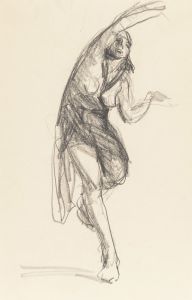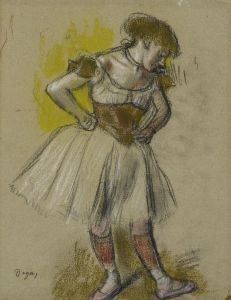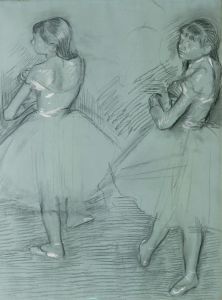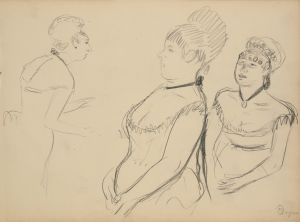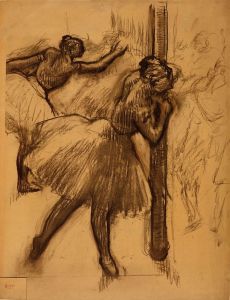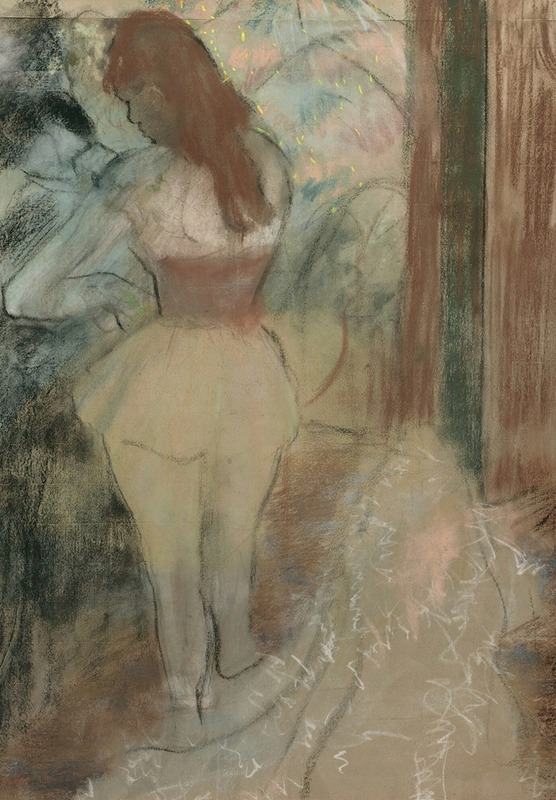
Danseuse S’habillant
A hand-painted replica of Edgar Degas’s masterpiece Danseuse S’habillant, meticulously crafted by professional artists to capture the true essence of the original. Each piece is created with museum-quality canvas and rare mineral pigments, carefully painted by experienced artists with delicate brushstrokes and rich, layered colors to perfectly recreate the texture of the original artwork. Unlike machine-printed reproductions, this hand-painted version brings the painting to life, infused with the artist’s emotions and skill in every stroke. Whether for personal collection or home decoration, it instantly elevates the artistic atmosphere of any space.
Edgar Degas, a prominent French artist associated with the Impressionist movement, is renowned for his depictions of dancers, capturing their grace, movement, and moments of quiet preparation. One of his works, Danseuse S’habillant (translated as Dancer Dressing), exemplifies his fascination with the world of ballet and his innovative approach to composition, color, and form.
Degas created Danseuse S’habillant using pastel, a medium he frequently employed to achieve vibrant colors and delicate textures. The artwork portrays a dancer in an intimate, unguarded moment as she adjusts her clothing. This subject matter reflects Degas's interest in the behind-the-scenes aspects of ballet, focusing on the labor and preparation that underpin the seemingly effortless performances on stage. Rather than idealizing his subjects, Degas often depicted them in natural, candid poses, offering a glimpse into their private world.
The composition of Danseuse S’habillant is characteristic of Degas's style, with a strong emphasis on asymmetry and cropping. These techniques, influenced by Japanese prints and the advent of photography, give the work a sense of immediacy and spontaneity. The dancer is placed off-center, and the surrounding space is rendered with minimal detail, drawing attention to her figure and movements. Degas's use of pastel allows for a rich interplay of colors and textures, capturing the softness of fabric and the subtle play of light on the dancer's skin.
Degas's focus on dancers was not merely aesthetic but also reflective of his broader interest in human form and movement. He spent countless hours observing and sketching dancers at the Paris Opéra, creating a vast body of work that explored their physicality and discipline. His works often highlight the tension between the beauty of performance and the physical demands placed on the dancers.
While the exact date of creation for Danseuse S’habillant is not definitively documented, it is consistent with Degas's prolific output of pastel works in the late 19th century. During this period, he increasingly turned to pastels as his primary medium, experimenting with layering and blending techniques to achieve a luminous, painterly effect.
Today, Danseuse S’habillant is celebrated as a testament to Degas's mastery of pastel and his ability to capture the fleeting, intimate moments of his subjects. The work is part of the broader legacy of Degas's contributions to modern art, influencing subsequent generations of artists with his innovative techniques and unique perspective on everyday life.






